Sapphire Quality Factors
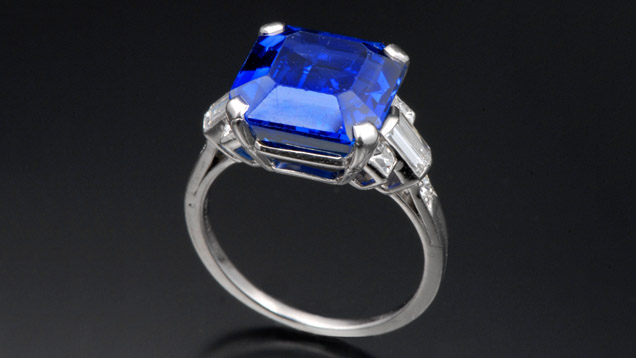
Sapphire is one of the Big three of jewelry colored gemstones—the other two are ruby and emerald. A durable stone that’s designated as a birthstone for September, it captures jewelry buyers with its practicality and aura of romance.
Corundum is the mineral species that includes both sapphire and ruby as varieties. Red corundum is known as ruby and all other colored corundum (including colorless, or white sapphire as it is known in the trade) is sapphire, although blue is the most well-known.
Colors of Sapphire
Sapphire is generally known as a blue gemstone but surprisingly it comes in a wide range of colors and quality variations. In general, the more intense and uniform the color is, the more valuable the stone.
Sapphires that are not blue are known as fancy sapphires, and may be any color—except red (which is a ruby). The fancy sapphire colors are: pink, orange, yellow, green, purple, and violet. There truly is a different color of sapphire to suit anyone’s taste!
Blue Sapphires
Color has the greatest influence on a sapphire’s value, and preferred sapphires have strong to vivid color saturation. The most valued blue sapphires are velvety blue to violetish blue, in medium to medium-dark tones. Sapphires with these qualities command the highest prices per carat. Less valuable blue sapphires might also be grayish, too light, or too dark.
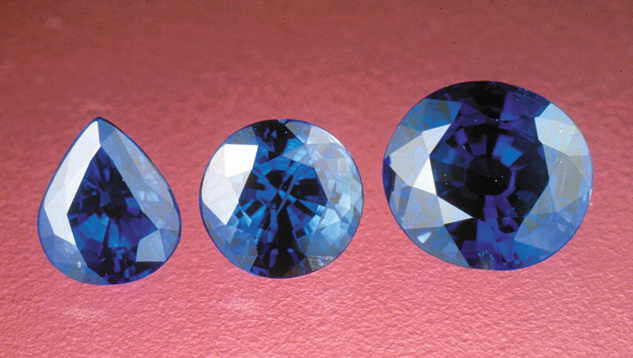
What is a Padparadscha Sapphire?
An extremely rare and collectible variety that is a mix of pink and orange is known in the trade as padparadscha. Such gems typically have a high value—much higher than many other types of fancy sapphires. Their color can be hard to describe. Some people say padparadscha sapphire colors should be called salmon or sunset. But the word padparadscha itself derives from the Sanskrit language and refers to the rich color of a lotus blossom.
Those who deal in these gemstones usually agree that padparadscha sapphires should range from light to medium pinkish orange to orange-pink.
Pink and Purple Sapphires
Pink sapphires range from light red (pink) to light purple with weak to intense color saturation which fall out of the color ranges for ruby or purple sapphire. Purple sapphires always have purple as the dominant color. They range from medium to dark reddish purple to violetish purple with weak to vivid color saturation.The major fancy sapphire color categories are padparadscha, pink and purple, orange and yellow, green, and colorless and black. Each category has its own color range, causes of color, and market.
Yellow to Orange Sapphires
Yellow sapphire is also available in a variety color saturations from yellow to orangy yellow and in light to dark tones, while orange sapphires have deep golden, to mandarin, and deep orange colors.
Yellow sapphires may be affected by other colors within the same gem and can range from light to dark greenish yellow to orangy yellow with weak to intense color saturation. The finest yellow sapphire is yellow to orangy yellow with vivid saturation.
Orange sapphires range from yellowish orange to reddish orange. The finest orange sapphires are strong, pure orange to red-orange with medium tone and vivid saturation.
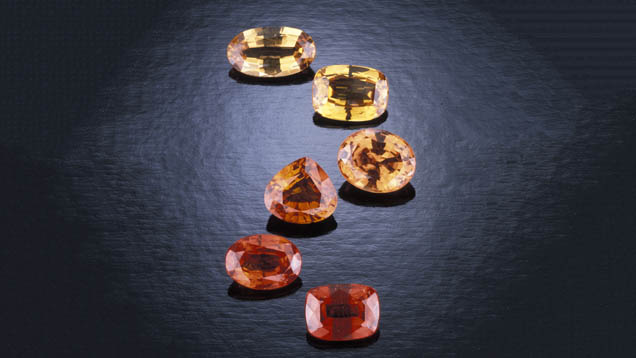
These sapphires range from yellow to a deep yellow-orange color called golden to highly saturated reddish orange. - Copyright: GIA & Tino Hammid. Courtesy: Varujan Arslanyan
Green Sapphires
Commercial-grade sapphires may contain a less desirable greenish blue color or strong greenish blue that is visible as you view the gem. Uniformly green sapphires that are saturated in color are actually rare and many collectors prize them. In green sapphires, a mix of yellow and blue sapphire accounts for the color a person sees.
Color Change Sapphires
Color-change sapphires are corundum’s chameleons—stones that change color under different lighting. Under daylight equivalent (fluorescent or LED daylight-balanced) light, the typical color-change sapphire’s basic color ranges from blue to violet. Under incandescent light, it ranges from violetish purple to strongly reddish purple. Some rare color-change sapphires change from green in daylight to reddish brown in incandescent light.
When gem experts judge color-change sapphires, they describe the color change as weak, moderate, or strong. The strength of the stone’s color change is the most important quality factor affecting its value.
The color of star corundum has a great effect on its value, though it is understood that miniscule inclusions are the cause of the asterism. They can affect transparency and color, and only very rare, exceptional gems exhibit transparency, depth of color and asterism. As such, the best star corundum has a crisp, distinct star against strongly saturated color. If the color is too light, it doesn’t provide enough contrast for the star’s rays, and the star will be less visible.
Star corundum can be red, pink, blue, black, gray, brown, purple, or yellow—practically every color under the sun. The term “star sapphire” encompasses all colors of star corundum except red, which is called star ruby.
Naturally, some colors of star corundum are valued more highly than others. In general, the most prized colors are the same as the colors most valued in non-phenomenal corundum: red and blue.
Trade terms based on sources can represent certain colors and qualities that are associated with a stone’s source, generally they refer to the finest stones from that source. But a single source never consistently yields gems that are all the same color and quality. In fact, the descriptive term might represent only a small percentage of its production.
Sapphire Clarity
Blue sapphires typically have some inclusions, but they generally have better clarity than rubies. Blue sapphires with extremely high clarity are rare, and very valuable.
Several types of inclusions are found in sapphires. Among these are long thin mineral inclusions called needles. Fine needles are called silk when they occur as the mineral rutile in intersecting groups. Other clarity characteristics in sapphire are included mineral crystals, partially healed breaks that look like fingerprints, color zoning, and color banding.
Generally, inclusions make a stone less valuable. Price can drop substantially if the inclusions threaten the stone’s durability. Even so, inclusions can actually increase the value of some sapphires. Many of the most valuable Kashmir sapphires contain tiny inclusions that give them a velvety appearance. They scatter light, causing the coveted visual effect without negatively affecting the gem’s transparency.
Star Sapphire
Star sapphires and star rubies belong to the phenomenal corundum category. The star effect is called asterism. It’s caused by reflections from tiny, needle-like inclusions that are oriented in several specific directions. Stars are usually made up of 2, 3, or 6 intersecting bands, resulting in 4, 6, or (rarely) 12 rays.
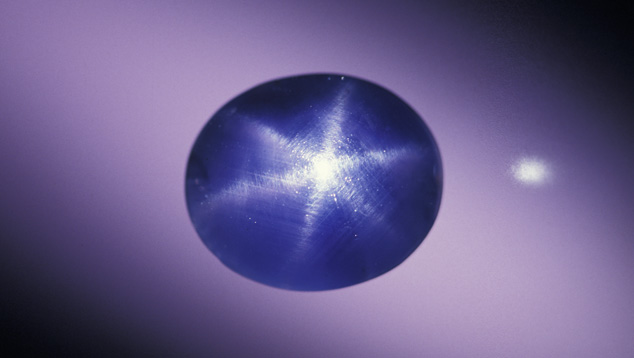
Star sapphires usually have stars have 6 rays, and 12-rayed stars are quite rare. Two different sets of inclusions—one of rutile and one of hematite—oriented in slightly different directions can cause a 12-rayed star.
Hematite inclusions cause asterism in black star sapphires. The sapphire’s color is actually yellow, green, or blue, but the inclusions make it appear dark brown or black.
The finest star is distinct, centered on the top of the stone, and visible from a reasonable distance, about arm’s length. The star’s quality should be the same when viewed from all directions.
Ideally, the rays should be uniform in strength, reach from girdle to girdle on the cabochon, and intersect at the top center of the stone. The best stars are straight, not fuzzy, wavy, or broken. The reflective stars should contrast strongly against the gemstone’s bodycolor. The star should also have elegant “movement.” This means that, as you rock the stone, the star should appear to move smoothly across the surface.
The best and most expensive star corundum is semi-transparent, with just enough silk to create a well-defined star. Too much silk can harm transparency and also lead to poor color, lowering the value of the stone considerably.
Sapphire Cut
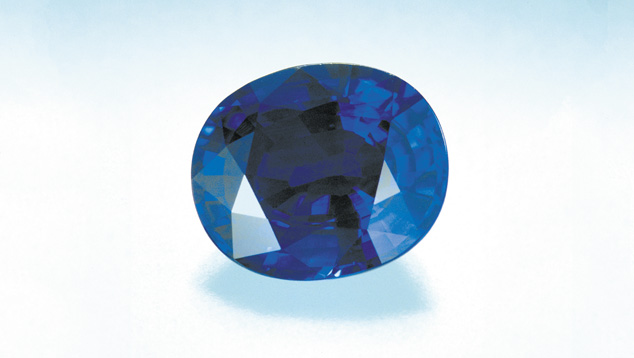
The shape of a rough sapphire crystal influences the finished stone’s shape and size. Rough sapphire’s most common crystal form is a barrel- or spindle-shaped hexagonal pyramid. To achieve the best overall color, maintain the best proportions, and retain the most weight possible, cutters focus on factors like color zoning, pleochroism, and the lightness or darkness of a crystal to best determine how to orient the gem during cutting.
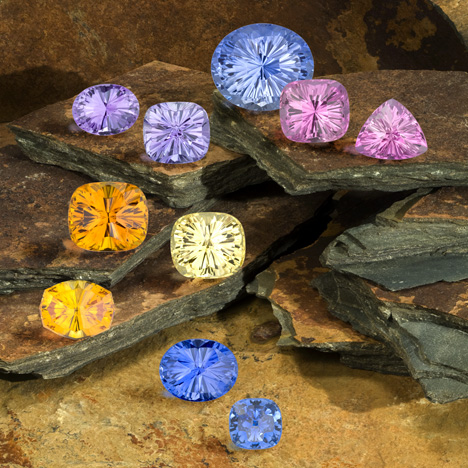
These sapphires are miniature works of art that have been expertly cut into custom designs. – Photo: Robert Weldon/GIA. Courtesy: Mark Gronlund, Umatilla, Florida
Color zoning—areas of different colors in a stone—is a common sapphire characteristic. Blue sapphire often has angular zones of blue and lighter blue. To accommodate color zoning in some sapphires, cutters orient the concentrated color in a location that offers the best visible color in the cut stone.
In Sri Lankan sapphires, the color is often concentrated close to the surface of the crystal. If a cutter can orient the culet within the concentrated area of color, the stone will appear entirely blue in the face-up position.
Pleochroism refers to different bodycolors in different crystal viewing directions. Blue sapphires often have greenish blue and violetish blue pleochroism. It’s most desirable to orient the cut so the stone shows the violetish blue color when it is set in jewelry.
Star Sapphire Cut
Star corundum must be cut as a cabochon to display asterism. A finished stone’s attractiveness depends on the star’s orientation and the cabochon’s symmetry, proportions, and finish.
The cabochon must have an appealing appearance, with the star properly centered when the gem rests on its base. The stone’s outline should be symmetrical.
For most stones, the dome should be fairly high—about two-thirds of the stone’s width—to focus the star sharply. If it’s too high, the phenomenon loses its graceful motion when the stone is tilted. Excessive height also makes the stone difficult to mount.
If the dome is cut too shallow, the star will be visible only from directly above. Black star sapphires, however, are prone to parallel breaks, so they’re usually cut very flat to reduce the risk of damage.
A stone should not have excess weight below the girdle that doesn’t contribute to the optical effect or reinforce color.
Sapphire Carat Weight
Blue sapphires can range in size anywhere from a few points to hundreds of carats, and large blue sapphires are more readily available than large rubies. However, most commercial-quality blue sapphires weigh less than 5.00 carats.
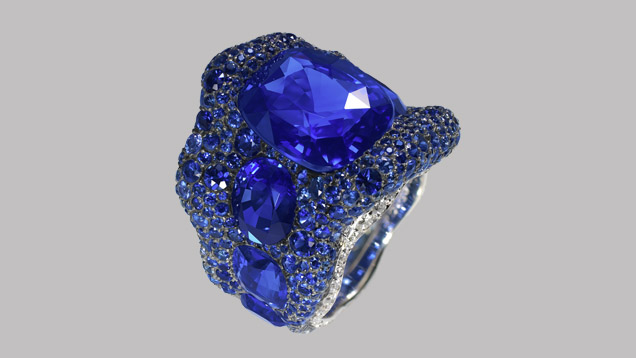
Large commercial-quality blue sapphires are rare, but more available than large fine-quality ones. As a result, size makes more of a difference in the price of fine-quality sapphire.
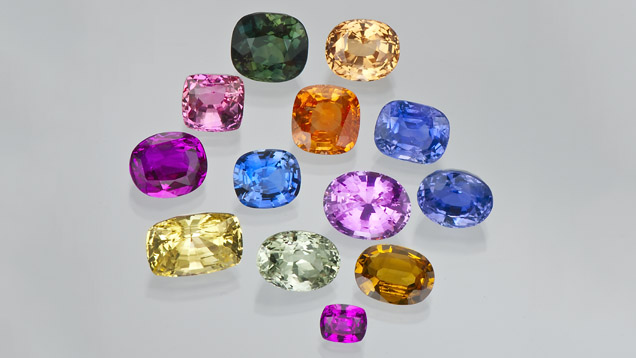
.jpg)


